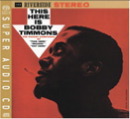So last night was THE concert: Pixies with Mission of Burma at the Tsongas Arena in Lowell. Prior to the show, I kept looking for information about the Pixies’ concerts and was disappointed in the quality of the writing that I found. After last night, I understand; the show was so INDESCRIBABLY WONDERFUL that any attempt to describe it would be FUTILE. But I’ll try anyway, fanboy slobbering aside.
The crowd at last night’s show was an odd mix. Lots of college kids, a bunch of people my age or so, a few gray heads and more than a few high school kids. But all of us seemed united in one thing—none of us seemed like we were typical concert goers; all of us seemed in disbelief that the show was really about to happen. “If they just play ‘Dig for Fire,’ I’ll be happy,” said one fan behind me on the floor. His friend replied, “I’ll settle for ‘Bone Machine.’” His friend said, “Actually, I’d settle for ‘Crackity Jones’…”.
The warm-up act, the Bennies, elicited some surprised laughter when they wheeled out on stage. Yes, wheeled; the Bennies’ lead singer, Jeremy Dubs, is a little person who’s confined to a wheelchair. But he rocked hard when they came out of the gate, at one point headbanging so hard that his glasses flew off. The group played a tight set of mostly short songs, many of which betrayed the Pixies’ influence through frequent meter and tempo changes (though lyrically the group was a lot less surreal than their ticketmates). I’ll look forward to finding their album when it’s released.
Then Mission of Burma took the stage. They started hard, with “The Setup” from their new album, ONoffON, and didn’t let up throughout a hard-edged set that alternated new tunes like “Falling” (which was spectacular live) with influential early material like “Peking Spring,” “Academy Fight Song,” “Fame and Fortune,” “This Is Not a Photograph,” “Dumbells,” “Red,” and of course “That’s When I Reach for My Revolver.”
As I listened to the band, several contradictory thoughts were going through my mind at once. First, few crowd members seemed familiar with the band’s work, which is unfortunate; if Mission of Burma couldn’t get a mosh pit or even a little pogoing started with “Academy Fight Song” less than an hour from their own home town, what the hell was wrong with the world? Second, Roger Miller is an amazingly inventive guitarist, and I wish I had seen his performance with Thurston Moore and Lee Ranaldo at Irving Plaza two years ago. I wasn’t aware of this date last night, but remember thinking distinctly that with Mission of Burma’s songwriting skills and Sonic Youth’s inventive guitar onslaught, you could have a really amazing supergroup…
Third, Clint Conley. For a guy who until 2002 was comfortably retired, living the suburban life (coincidentally, right next door to my B-school stats professor), and working in staid local television, he rocked harder and more passionately than just about anyone I’ve seen recently, hitting the high notes in “Revolver” and “Academy Fight Song” and playing his bass, as a guy on the floor next to me said, “more like a guitar” and with more virtuosity than I’ve heard in a long time. He was briefly on stage before the set started, waving to someone in the crowd, and I saw him shaking hands in the bleachers afterwards. He seemed genuinely thrilled to be back, and he gave me hope. If he could rock that hard being almost 15 years older than me, surely I can afford a little passion of my own at 32.
Finally, the Pixies. Damn. Opening with “Bone Machine,” the band romped through a set that was heavy on early material from Surfer Rosa and Come On Pilgrim (while Doolittle was performed almost in its entirety, they only included one track, “U-Mass,” which was actually one of their earliest songs, from their final album Trompe Le Monde). The band seemed to be relishing the spotlight, drawing energy from the crowd—which was finally pogoing, moshing, and “passing the guy”—and turning it around and channelling it into fiercer and fiercer performances, really almost daring the crowd, saying, “We can outlast you.” And they did—this is the first show where I’ve seen multiple people carried out of the crowd after having fainted or otherwise been overwhelmed.
Mostly the songs were as they had been originally recorded, though they showed no signs of rust for their faithfulness to the original conception. A major exception was “Mr. Grieves,” “Nimrod’s Son,” in which “Frank Black/Black Francis/Charles Thompson” slowed down the second verse to half tempo, to totally devastating impact, and “Vamos,” during which Joey Santiago set up a wall of feedback, set his guitar on a stand, caught a drumstick tossed by David Lovering, and proceeded to play the feedback like a theremin with his hands, the stick, and even his amp cord.
As for setlist, I can only give a rough report as my brain exploded partway through the show, but other songs played included “Velouria” (which was far rockinger than the recorded version), “Is She Weird,” “Wave of Mutilation” (fast version), “Debaser,” “Tame,” “I Bleed,” “Here Comes Your Man,” “Dead,” “Monkey Gone to Heaven,” “Mr. Grieves,” “Crackity Jones” (yes indeedy), “No. 13 Baby,” “Hey,” “Gouge Away,” “Gigantic,” “Where Is My Mind?,” “Broken Face,” “Break My Body,” “Something Against You,” “Cactus,” “The Holiday Song,” “In Heaven,” and “Caribou.”
The onstage chemistry was interesting, with Kim, with a grin that I’ve seen described as “beatific” but I would have to characterize as “shit-eating,” mostly hanging out back at the drum kit with David Lovering, leaving Charles and Joey Santiago covering vast isolated territories up front. But there were some good moments as well, such as Charles busting Kim’s chops for blowing the surprise intro to “In Heaven,” and the Waltons-style “Goodnight Charles…goodnight Joey…goodnight Kim…goodnight David” that lasted for about two minutes in various combinations and repetitions.
The Pixies still have a few shows left on this tour. I don’t care who you have to kill to get a ticket if you haven’t seen them yet. Go have your mind blown.


 becomes
becomes 
